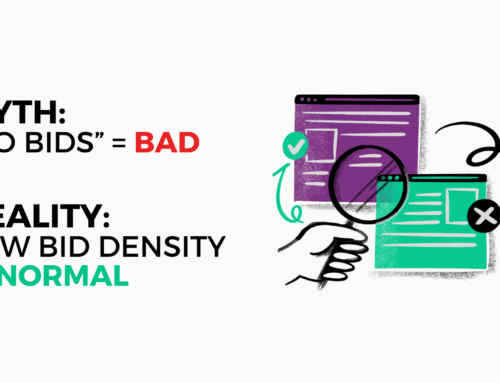Bits and Bobs from around the industry:
GroupM is removing MFAs from its inclusion lists
GroupM, a major media agency, has taken a proactive step in addressing the lack of an industry-standard definition for made-for-advertising sites (MFAs) by implementing its own vetting process. It claims to be the first media buying agency to do so. GroupM has incorporated safeguards against MFAs across all its inclusion lists in the markets it operates in. Inclusion lists are collections of approved publisher websites used to guide programmatic advertising budget allocations. This move comes in response to concerns raised by marketers about their ads appearing on MFA sites.
GroupM uses programmatic supply chain management company Jounce Media’s list of MFAs, which is updated daily based on specific key performance indicators (KPIs), to vet publisher domains on its inclusion lists. The criteria for determining MFAs, as defined by Jounce Media, have been widely adopted in the industry. GroupM engages in conversations with publishers flagged on the MFA list to validate their inclusion. Currently, there have been no unexpected matches between GroupM’s inclusion lists and Jounce’s MFA list.
By incorporating Jounce’s daily updated MFA list into its vetting process, GroupM aims to enhance the frequency of updating its inclusion lists. The agency’s intention is to maintain flexibility in the size of its inclusion lists and adjust based on Jounce’s MFA list.
This proactive stance by GroupM against MFAs has implications for the advertising industry, signaling a shift away from vanity metrics and highlighting the importance of more transparent, reliable metrics in programmatic advertising. This initiative may prompt other media agencies to follow suit in their efforts to combat MFAs and enhance transparency and supply chain visibility. The recent focus on MFAs by the Association for National Advertisers (ANA) report has added to the momentum for change in how programmatic ad campaigns are measured and evaluated.
It’s Time to Dispel the Multicultural Media Scale Myth
The advertising industry has seen increased attention on investing in multicultural and diverse media in recent years. However, progress in this area has been slow due to persistent myths regarding the scale and value of minority-owned media properties. These myths are limiting the growth potential of these businesses and causing marketers to miss out on substantial revenue opportunities.
The challenges related to dispelling these myths are as follows:
1. Categorization: Placing minority-owned media in a separate category limits their perceived value, leading to restricted allocations in media plans and hindering growth.
2. Budget Allocation: Many decisions to allocate funds to minority-owned media are based on a small percentage of the overall budget, which fails to reflect population growth and doesn’t close the spending gap.
3. Ad Tech: Increasingly, ad agencies and brands are narrowing their partnerships, excluding minority-owned companies from consideration due to limited partnerships.
4. Ad Buyer Misperceptions: Minority-owned properties are sometimes inaccurately labeled as small or subscale, despite evidence of their substantial and growing audiences.
Reaching diverse audiences is crucial for modern brands’ success, and research indicates that supporting minority-owned media strongly resonates with multicultural consumers. Ignoring these communities is detrimental to business, as it not only misses out on significant scale but also fails to align with diversity goals.
Change requires a fundamental shift in the industry’s approach to minority-owned media. This involves addressing structural obstacles and institutional biases, and educating stakeholders about the true value and reach of these properties. Dispelling the scale myth is crucial for achieving equitable media allocation and investment, benefiting brands’ revenue and market share objectives.
Adtech firm The Trade Desk has a plan to reduce the cost of digital ads
Adtech company The Trade Desk is planning to bid below the asking price for digital ads as a part of a new initiative. The Trade Desk operates a “demand-side platform” used by advertisers to purchase internet ads. It’s one of the largest independent DSPs, handling significant ad spend. Starting in September, The Trade Desk aims to standardize the price floors of digital ads, which are set by publishers in collaboration with supply-side platforms (SSPs). Different SSPs charge varying fees, leading to diverse price floors for the same ad inventory. The Trade Desk’s move is intended to eliminate inaccuracies and manipulation in price setting. This strategy also seeks to increase transparency for publishers and advertisers.






